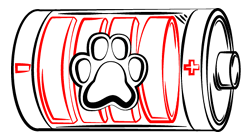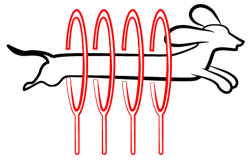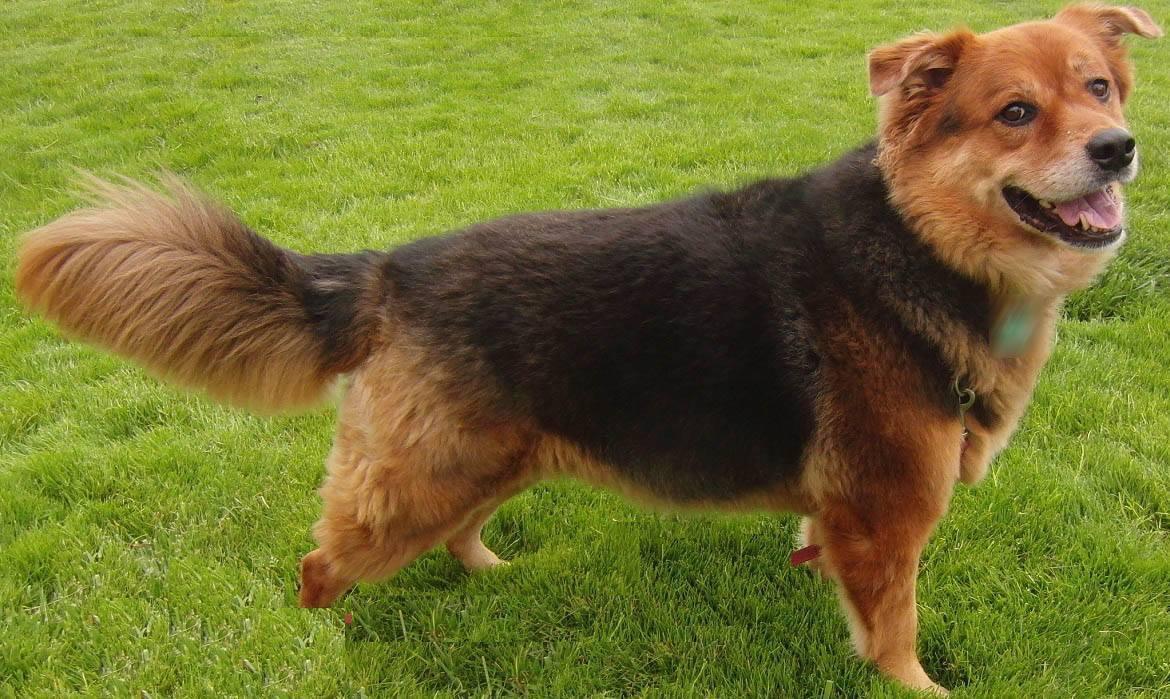
Paws ‘N’ Pups Quickview
Size
| Energy Level
| Trainability
| Paws ‘N’ Pups Rank
|
Characteristics
| Physical Characteristics: Height: 20-25” Weight: 45-80 lbs. Energy Level: High | Colors: The German Australian Shepherd is found in the following colors:
|
Health & Longevity
Average Life Span: 13-15 years
The German Australian Shepherd is hybrid breed of the Australian Shepherd and German Shepherd. This breed is known to have some major health conditions and diseases that you need to watch out for. Working with a reputable breeder can eliminate the possibility that your puppy develops many of these conditions. Some of the German Australian Shepherd’s health concerns include degenerative myelopathy, deafness, bloat, epilepsy, cancer, allergies, joint dysplasia, eye problems, and hypothyroidism.
Degenerative myelopathy is a disease that can occur in your German Australian Shepherd that will affect the spinal cord of your pup. This disease often affects older dogs and will eventually cause loss of coordination or paralysis in your pup’s hind legs.
It is not uncommon for this breed to experience some level of deafness as they age. It is unlikely that your puppy will become fully deaf, unless born this way. Senior dogs can develop deafness and may face some degree of deafness.
Bloat is a condition which is usually more prevalent in large and giant sized breeds however smaller breeds can sometimes be affected by it too. This condition occurs when too much air or gas enters into your pup’s stomach. When this happens, the stomach expands and then places increased pressure on the other organs. This condition can be fatal if not caught in time or treated promptly.
Seizures can happen in your German Australian Shepherd, but do not usually present themselves until after the puppy stages. If your pup does have epilepsy, you may notice that he or she convulses and foams at the mouth. A seizure can either be mild or violent.
Cancer and allergies are also common in the German Australian Shepherd. You should talk with your veterinarian and monitor your pup’s health over the years. With proper vet checkups and monitoring, you will be able to catch any issues early on and appropriately treat them.
Joint dysplasia occurs in many breeds and is often common in larger breeds. Joint dysplasia can occur in the hip or the elbow and happens when the joint is either deformed or does not fit into the socket properly. This condition can cause your dog to have trouble when he or she sits or stands.
Eye problems range from cataracts to eye infections and you should monitor the health of your pup and report any problems to your veterinarian right away.
Lastly, you may notice that your German Australian Shepherd is obese or has trouble gaining weight. When this happens, it is likely because there is an issue with your pup’s thyroid. This condition can easily be monitored and treated with a specialized diet and medication.
The German Australian Shepherd’s life expectancy is 13 to 15 years.
Temperament & Train-ability
The German Australian Shepherd is described as a dog who loves his or her family, is affectionate, and is playful yet caring and gentle. This breed is known to be a lover and will show you as much affection as you let him or her. You will find that your German Australian Shepherd protects you and your loved one’s while being weary of strangers and alerting you to any possible problems.
This breed likes to be around his human companion and you will find that he may follow you from room to room in the home. Your German Australian Shepherd is sure to be alert and ready to play when you say the word.
You should have a yard for this pup to run around in and stay active in and you also need to take him or her for a couple of walks throughout the day.
This breed makes a good partner to take hikes with or even do physical activities with. Your pup’s energy and stamina allow him or her to be by your side without tuckering out early on in the day.
The German Australian Shepherd is intelligent and easy to train. He or she will work to please you and likes to listen to commands. You will not run into too much of a problem when it comes to stubbornness, but you will need to exert yourself as the pack leader to prevent any dominance issues.
Grooming
Your German Australian Shepherd is going to shed and you will notice that it becomes much worse after the winter, right before the summer heat hits. To help prevent shedding and to keep your pup’s coat soft and free from tangles, you should brush him or her once per day.
You do not need to bathe your pup on any special schedule and too much bathing can cause skin dryness and irritation. While you do not need to bathe him often, you do need to clean his ears once per week to get rid of any buildup of dirt and wax.
Lastly, you should trim his or her nails every 3 – 4 weeks to prevent them from growing too long. In some cases, you may need to trim them more often as the nails can grow faster than noted.
Diet
Your German Australian Shepherd will eat anywhere between three and four cups of high quality dry food per day. You want to find a brand of dry food that is high in protein and low in calories. The food should be made with wholesome ingredients and not contain any chemicals.
Looking for a German Australian Shepherd?
 Find A German Australian Shepherd Breeder |  German Australian Shepherd Puppies For Sale |  Adopt A German Australian Shepherd |
Cost
A German Australian Shepherd puppy costs anywhere between $300 and $900. The price you pay will depend on the breeder you choose to work with and the sex of the puppy you choose. Females often cost more than males because of their breeding potential.
In addition to the initial cost of the puppy, you will need to factor in costs for vet checkup, food and supplies, vaccines, preventative medicines, and any surgeries that may need to be performed.
Paws ‘N’ Pups Ranking
Paws ‘N’ Pups ranks every breed out of 4 with 1 being easiest to integrate into your life and 4 being the toughest – The lower the ranking the better.
Ranking takes into account a few basic factors including cost, skill level needed, high vs low maintenance and how critical regular training is to success. The German Australian Shepherd makes for a wonderful family dog and will get along well with any children and pets in your home. This breed is easy to train and take care of. This breed ranks a 1.
Breeds Similar To German Australian Shepherd
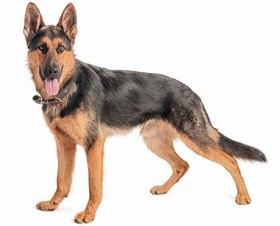 German Shepherd | 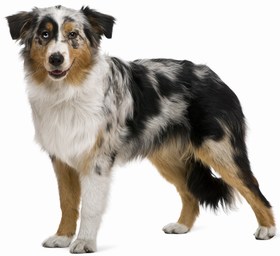 Australian Shepherd |  Belgian Malinois | 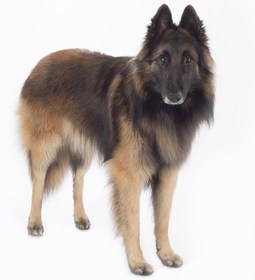 Belgian Tervuren |


